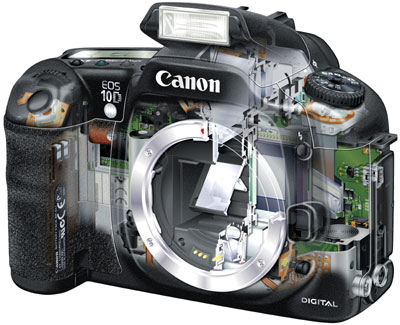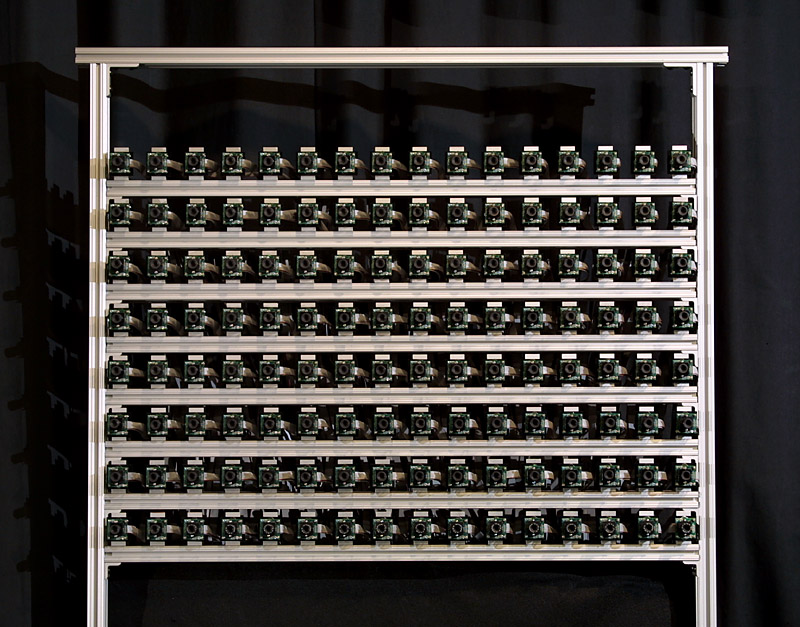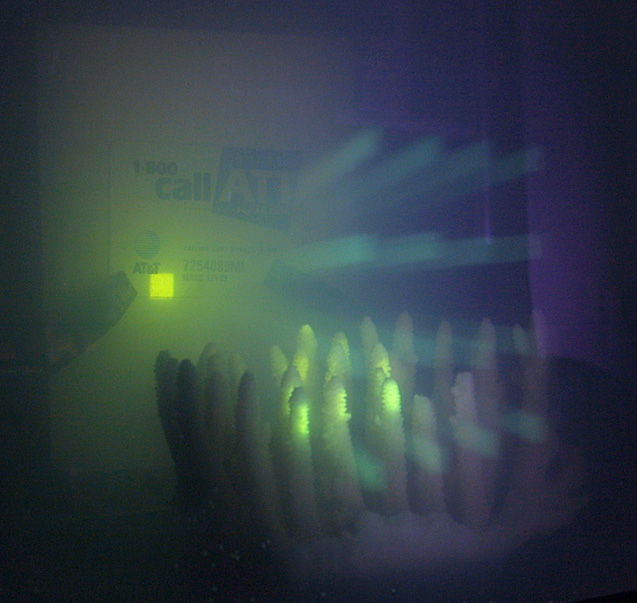




|

|

|

|
| Cutaway view showing some of the electronic components in a Canon 10D - one of the most capable prosumer digital cameras (image from Canon USA). | The Stanford multi-camera array. The 128 cameras can be densely packed for high-speed videography or widely spaced for capturing light fields. | An array of projectors can be treated as a single virtual projector with a large aperture. Distributing the light across a large aperture reduces backscatter underwater, improving visibility. | An array of cameras can be treated as a single virtual camera with a large aperture and a shallow depth of field, letting us see through partial occluders like foliage. |
|
|
Although the digital photography industry is expanding rapidly, most digital cameras still look and feel like film cameras, and they offer roughly the same set of features and controls. However, as sensors, actuators, and in-camera processing systems improve, these cameras will begin to offer capabilities that film cameras never had. Among these will be the ability to capture and combine multiple views taken with different exposures, zoom or focus settings, lighting, camera aim, even camera placement and scene composition. Equally exciting are new technologies for creating efficient, controllable illumination. Future "flashbulbs" may be pulsed LEDs or video projectors, with the ability to selectively illuminate objects, recolor the scene, or extract shape information. These developments force us to relax our notion of what constitutes "a photograph." They also blur the distinction between photography and scene modeling. These changes will lead to new photographic techniques, new scientific tools, and possibly new art forms.
In this one-time seminar course, we will survey the converging technologies of digital photography, computational imaging, and image-based rendering, and we will explore the new imaging modalities that they enable. In particular, we will focus on four areas:
Click here for the course's home page and here for a schedule of lectures.
The course is targeted to both CS and EE students, reflecting our conviction that successful researchers in this area must understand both the algorithms and the underlying technologies. Most classes will consist of a lecture by one of the instructors. These lectures may be accompanied by readings from textbooks or the research literature. These readings will be handed out in class or placed on the course web site. Students are expected to: